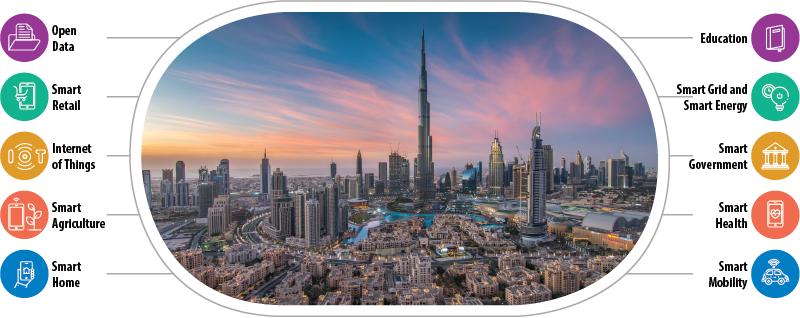Introduction
In a recent client conversation, design was raised as a guide to ensure effective blockchain implementation — but then was summarily dismissed. After all, what does design have to do with a distributed ledger technology concept? Implementing a blockchain requires a team of skilled engineers and developers and a tech stack that can deliver the capabilities. What role could a design strategist, design researcher or user experience (UX) professional possibly play?
The individual pieces of technology that work together to create the blockchain have existed for a long time as distinct ideas, concepts and successful implementations. In fact, a design-thinking, dot-connecting mindset was likely behind the marriage of these different proven technologies, resulting in the concept of blockchain. Over time, however, the concept of a “blockchain project” has become more prominent as a technology construct, while overlooking what that technology accomplishes for the user and the business. In some cases, a blockchain may not even be the right choice to satisfy the human or business need.
According to Forbes (“ Why Enterprise Blockchains Fail,” May 2019) and many other sources, upwards of 90% of blockchain projects are considered failures. The majority of these projects do not go beyond the proof-of-concept stage, so details of the failures are not explicitly recorded. Along with the more apparent technological challenges, expert opinions identify intrinsic and learned human behavior as well as social and organizational coordination as significant causes of blockchain failure. Strategic design excels at uncovering these factors and understanding their influence on technological solutions.
It is time to understand design thinking better, and address the vital role it can play in successful blockchain projects.
What is blockchain?
Think of a ledger book — a physical book used for accounting purposes — that includes multiple entries of transactions that have already occurred or are pending. This book is now a single source of truth under the control of a single person or a small group of people who make the entries; in other words, an intermediary (and not the people involved in the transactions) creates the record. Yet the intermediary is the only entity responsible for looking up the data in the book and conveying information when there is a query. What’s more, the physical contents can be erased or modified, and the book itself can be destroyed.
One can understand a blockchain as a digital version of such a ledger book — a way of documenting data on the internet. Cryptography and DLT (Distributed Ledger Technology) address the shortcomings of the physical book in terms of both security and scale, allowing large numbers of transactions and users to access a time-stamped series of immutable data records. The chain is managed by a group of computers not owned by any single entity, and each block of data in the chain is secured and bound to the others using cryptographic principles.
Blockchain’s main concepts and features include the following:
Immutable and irreversible records. The data cannot be edited or corrupted.
No intermediaries. Because there are no proxies, nothing is lost in translation — and there are no extra costs.
Transparency. Anyone can see the ledger’s contents, but no one can change it.
Consensus-based decision-making. No single person or entity is the source of truth.
Distributed storage. The data is replicated in multiple locations.
Decentralized network. A single point of failure cannot take down the network (this can refer to either technology or business model — or both).
There are three main types of blockchain: public, permissioned and private. The public version is the most well known and is often mistakenly understood as interchangeable with bitcoin and cryptocurrency in general. However, the potential applications of blockchain are manifold. Private blockchains within the confines of an enterprise are starting to take root and uncover value — for example, in building the supply chain of a company or in developing smart contracts, voting systems and multiplayer games.
What is design?
Humans have designed everything in our life that does not occur naturally. From faucets and water glasses to traffic lights and driving rules to a global financial transaction management system, design has played an essential part in solving problems and influencing human behavior. We are affected by design every day, regardless of whether we are aware of it. When something is well designed, it is adopted quickly and becomes ubiquitous.
A critical study has revealed that design-led companies outperformed their competition two to one in revenue and returns (“ The Business Value of Design,” McKinsey & Company, October 2018). A study by the Design Management Institute (“ The Value of Design”) shows that over the past 10 years, design-led companies have maintained a significant stock market advantage, outperforming the S&P by an extraordinary 211%. Apple, Starbucks, Airbnb, Nike and Samsung are some examples that either started as or transformed into design-led companies and garnered unprecedented success.
For most businesses, however, design as a day-to-day concept, practice and discipline is a broad, misunderstood term, often conflated with visual creativity and artistry. Given that context, here are some things to remember:
- Design is not about making things pretty. Design is about communicating information, reducing complexity, and presenting thoughts and ideas with clarity. Appropriate aesthetics, while an essential part of this overarching goal, are not the goal itself.
- Good design is invisible. Excellent design is hidden at first because it intuitively communicates ideas, expresses and generates emotion, or presents the right information first and foremost. It is not only about how something looks, but about how it solves a problem — how it operates, feels, fits in a system and fulfills needs.
- Design is about connecting dots. Connecting abstract concepts with real-life observations to derive insights and meaning is a critical skill for a designer. Hypotheses, rigorous methods and tests are used to vet the ideas, and the cycle is repeated with additional (and different) dots. It’s not a linear process.
- Design methods can be applied at any level. Whether the goal is fostering organizational or cultural change, defining a product that is new to the world, or reimagining an existing system, an organization increases the possibility of success by starting with design.
- Design is never complete and absolute. It embraces the idea that there will always be change. As the environment changes, organizations, people and needs change too. Design is essential to address variation and transformation and to stay relevant in an ever-changing world.
We can define design as the methods and thought processes required for contextual inquiry for finding, defining, ideating and solving problems. It is not to be understood only as UX design or communication design or visual design — although all those could form parts of the broader strategic umbrella of design (as we define it).
Broadly, design works when organizations adopt three crucial approaches:
- Empathize with the humans involved, and understand how the introduction or change of a product and service will affect the sociotechnical system they live in.
- The human needs provide the invaluable “Why?”
- A well-researched, robust business model leads to the “What?”
- Technology is the “How?”
- At the intersection of these three is human-centered design (HCD).
- Observe, research, learn, ideate, test and repeat. Embrace ambiguity, and shed preconceived notions. Nothing innovative and successful ever happened at the first shot — focused experimentation, validation and iteration are key.
- Ask questions, tell stories and bring people together toward a common goal. With multiple viewpoints and misconceptions about change and innovation, organizations have a tough challenge on their hands in aligning their workforce and leaders. A narrative that encompasses the human, business and technology elements is essential for successful innovation and adoption of new ideas and technologies.
For design to enable a successful blockchain, it is vital to consider the human element first when evaluating a use case.
Why consider the human side first — and how does design help?
The failure of a blockchain project, on the surface, appears to stem from either technological complexity or organizational immaturity and unreadiness. However, the more significant and perhaps more important reason for the low rate of adoption is sociological. Despite humans being involved at every level, from those involved in the creation, maintenance and governance of a blockchain to the end users, the human perspective is absent from most blockchain conversations.
Good design concepts lead to better real-world products and services

There are many reasons why businesses need to put the human element first when designing and adopting blockchain.
Blockchain and trust. Trust is a human experience that is critical for adopting anything new. The principles of usability in human-computer interaction cover the most critical problem of blockchain: the creation of trust in the system. Some of the central principles among Jakob Nielsen’s usability tenets — visibility of system status, user control and freedom, a match between the system and the real world, and error prevention — can be applied to a blockchain to create and increase trust. Human-centered design plays a significant part in the creation of models and UX that generate trust.
One example is MetaMask — a blockchain wallet introduced as an add-on extension and supported by popular browsers like Firefox, Chrome and Opera. MetaMask is a mobile dApp (distributed application) that tackles UX and usability issues by acting as a gateway to connect your browser to the Ethereum blockchain. It gives users control over how they can safely store and exchange digital assets that are conveniently and quickly accessible via their web browser on their device. Users benefit by not worrying about the storage of information — and by being able to trust the blockchain technology, rather than trust another person, in the value exchange of the digital assets.
Figure 1. MetaMask dApp wallet(examples)
Blockchain and systems thinking. A blockchain resides in a significantly human, sociotechnical system; it is not a stand-alone entity. The transactions that occur within this extensive system are typically mostly sociological. For example, a blockchain that is used to record time and attendance at a factory exists within a comprehensive system that comprises payroll, human resources, users’ finances, the business’s economic engine, and labor laws and regulations, to name a few things. Each part of the system relates to others, in various patterns and archetypes. The introduction of a blockchain disrupts the system and changes its nature. Strategic design offers insight on the system and on the effects of the disruption, to create the best solution and experience.
Blockchain and collaboration. Envisioning a blockchain application in a large organization is difficult because each silo or department is typically unaware of how the entire organization functions. If the application is intended to spread across silos, alignment on how they participate becomes critical. A blockchain sometimes presents a conflict of interest because many business practices and departments and groups function purely as intermediaries; the blockchain could make them partly redundant, so the organization is never able to embrace it completely. Furthermore, blockchain democratizes access to data and makes it transparent; a hierarchical organization may not find it easy to adapt to these principles. Strategic design can help ideate, align and define purpose and outcomes in these complex situations.
Figure 2. Smart Dubai blockchain concept

For example, Smart Dubai — a citywide smart transformation initiative — is developing a blockchain strategy to improve city services. It views blockchain as a tool to encourage improvement and a critical technology for achieving the goal of making Dubai the “happiest city on Earth.” The people behind this initiative benefit from an in-depth look into how various technologies will affect users, including residents, visitors, business owners, parents and families.
A vital part of the initiative’s strategy is understanding how users participate in and support blockchain technology to accomplish tasks and address their needs. The strategy centers around three goals: increasing government efficacy by transitioning all applicable government transactions to the blockchain, prompting the development of the blockchain industry and ecosystem within Dubai, and adopting the ground-floor position as a global leader in blockchain advancement. These initiatives can reduce administration expenditure in Dubai by 5.5 billion dirhams (1.5 billion USD) annually.
Through collaboration with the private sector and government partners, Smart Dubai aims to deliver and promote “the most efficient, seamless, safe and impactful city experience for residents and visitors” ( “Building a Happy City,” L. Zakzak and F. Salem, 2019). These partnerships aid in developing initiatives such as Smart Economy, Smart Living, Smart Governance, Smart Environment, Smart People and Smart Mobility.
Blockchain and human behavior. Empathy with end users, organizations and society enables designers to understand the right experience and value to bring to the user through a blockchain. Continuously seeking to understand user behavior at scale allows us to see the changing priorities of the people on the blockchain. For example, a 51% attack (when more than 50% of the people in a blockchain perpetuate a lie, and that becomes the truth) is a significant security flaw that is rooted in the human construct. Consensus-based truth means that manipulation of behaviors can change truth. Design, particularly the application of the principles of behavioral economics, helps bring clarity and strategic thought leadership to this area.
Figure 3. CryptoKitty creation on Ethereum platform
CryptoKitties is one of the first games built on the blockchain technology and was deployed for recreation and leisure. It operates on Ethereum’s underlying blockchain network. Players are given options to purchase, collect, breed and sell virtual cats. These interactions foster incentives to creating a cryptocollectible, earn and store game cryptocurrency tokens (ether) safely. Each CryptoKitty is unique and owned by the user, validated through the blockchain, and its value can appreciate or depreciate based on the market.
These incentives nudge players’ behavior to utilize the blockchain while engaging in social play with others in the game community.
What does the design-led approach to blockchain look like?
Mindset and context
Before we start talking about the tech stack and use cases, ask the following questions, using design methods to derive the answers and recording them in artifacts that will guide the entire project.
What is the value of the exchange?
Blockchain enables us to exchange value online. Design helps define this value by asking questions and through other exercises and activities. Some questions to ask about value exchange are: How would one determine what object is of value? Is it a data point? Digital currency? Personal information? Research documents? Medical information? Who will be using the data and information? Why are the data and information being exchanged? What tasks will users and systems do with the data and information? How will the data and information be maintained? Who will keep it? We could use activities, observations, interviews and exercises (such as card sorts) to determine what the users consider valuable.
Artifacts and methods: A value web of entities and exchanges to anchor all future conversations; observations, interviews, and other participatory exercises and activities.
Who are the stakeholders, and are they aligned?
Shared understanding between stakeholders and key decision-makers is crucial to any project’s success. With an emerging technology-based project, it is even more critical because that understanding may need to happen at multiple levels of the organization. The critical questions to align on are: What problem are we solving for either the user or the organization? Is this the right problem for the business to solve, and why? Is blockchain the right technology to solve this problem, and why?
Artifacts and methods: Workshops, framing and reframing exercises, interviews, stakeholder maps, strategic communications.
Why is the culture shift necessary?
People, technology and processes come together to make an organization. The way an organization typically rewards and punishes people determines the culture. Are innovation and disruption just buzzwords, or does the culture allow these to happen? More often than not, the introduction of a blockchain will disrupt the culture. Is the organization prepared for it? Is such a culture change even on the radar? What incentives do the employees have to implement or adapt to the blockchain system? What is the tolerance for trial and failure? What is the organization’s future vision, and how does this blockchain implementation fit in?
Artifacts and methods: Workshops; framing and reframing exercises; ideating and prototyping different culture shifts and business model and practice changes.
What role does UX play?
UX plays a critical part in the adoption and iterative growth of a blockchain system. In terms of priority, it should be right after security. As blockchain systems become more immersed in supporting and enhancing many existing and new processes, optimal user experiences for those processes need to be anticipated and addressed. Reducing the complexities in connecting and communicating with users makes it easier to understand the workings of a blockchain system as well as its value, impact and beneficial effects.
All users, however, should not have to understand complex underlying code or technical jargon. Good UX allows for this to happen and also helps create trust in the system. Ongoing feedback from users helps a systems grow, evolve, optimize, and anticipate future needs and wants. If an organization is not considering UX as part of the blockchain system, then we should ask why and educate leadership on its criticality.
Artifacts and methods: Customer journeys and experience maps; user research, iterative learning prototypes and user testing.
Frameworks and practices
Practice design thinking. Design thinking is a powerful human-centered approach to innovation that brings elements from the designer’s toolkit to integrate people’s needs, the possibilities of technology and the requirements for business success.
The typical steps are:
- Empathize by observing people and learning their needs through research.
- Define by forming insights, identifying opportunities and framing the problem.
- Ideate by using different methods and drawing inspiration from various sources.
- Prototype and experiment with these ideas with the consumer and business.
- Test early and often and refine and pivot as needed.
Our approach combines the agile development mindset with design thinking. It enables an iterative build and launch of innovation at different scales, as needed.
Figure 4. Agile design thinking process
Design thinking is a powerful culmination of technology, people’s needs and business success
Engage a cross-functional, interdisciplinary team. While having conversations with client stakeholders or otherwise considering and creating a blockchain system, engage a cross-functional team. Ensure that you have stakeholder participation from the technology and business sides, but also from a team that has focused on understanding the customer. In most traditional organizations, the functions of this last category roll up to marketing, although relevant information about end users also may live among UX, research and customer retention groups. Ideally, as the project evolves, the roles of design strategist, design and UX researcher, UX designer, technical architects and technology implementation specialists should be engaged; business analysts and industry and domain experts can round out the perspectives. The key is to encourage participants in the initial stages to be design-led and not technology-led.
Engage the user in constant testing and feedback loops. As blockchain technology evolves, the ability to continually test new changes at scale with the end user, and to use the feedback to learn and pivot quickly, is essential. Build it into the system as it is created rather than as an afterthought. Initiating and engaging in multiple conversations with users will allow the organization to stay apprised of their needs and wants. Set the stage for the user to expect change, and include them in the process; giving end users the power to test and build more robust and secure algorithms helps humans engage in a trust network.
Empower users by letting them know that their input matters and making it easy for them to give you that input. Such actions pave the way to higher user adoption and more extended engagement of the system. Validating early iterations of prototypes and Minimum Viable Products helps businesses reduce uncertainty in use cases, test new versions and future-proof the blockchain. Additionally, we can quickly evaluate future failure points in implementation, security and user experiences, and consider ways to mitigate those risks early.
Measure usability to evaluate progress and ensure success. The degree of success and adoption of a blockchain system directly relates to both trust and ease of use. When using new and sophisticated technology like blockchain, measuring and evaluating usability is as critical as ensuring correct, efficient implementation of the technology stack. To measure blockchain’s user value impact and usability, we recommend implementing heuristics and design principles from the Nielsen Norman Group, which have been applied across systems, processes, products and services in various industries and for many years, by UX designers, product managers, developers, marketing, product designers and more. Some of these specially designed heuristics and principles include the following:
- User control and freedom. Do users have options to undo and redo actions if they make mistakes? Do they have the authority to do it?
- Error prevention. Are there enough confirmation messages or other mechanisms to prevent the user from making errors?
- Consistent design and standards. Are the same visual language, situations and calls to action maintained throughout the platform? Is the user wasting time trying to deduce functionality?
- Design for the real world. Do the applications use language and visuals that are familiar to the user rather than entirely technical and specific to the blockchain?
- Addressing the learning curve. Does the application allow users to learn their way through the functions and tasks they need to perform? What are the hooks present to enable that learning curve?
- Flexibility and efficiency of use. Does the application cater to experienced and inexperienced users? Can the user tailor frequent actions?
- Communicative system feedback. Is the system feedback, like an error message or a system status, described in plain language with a clear call to action?
- Help. For those who need more, is adequate, easily searchable, task-focused information available?
A design-led approach paves the way for a successful blockchain implementation
When considering and planning a blockchain system, it is essential to ask a few basic questions before the technology construct: What human need will it address? What business value will it generate? The problems that stand in the way of adoption and success are mostly sociological, not technical, so a design-led approach is essential for finding and solving them. Forming a cross-functional team that encompasses designers, business analysts and technologists is the most effective approach. The team’s primary focus should be on designing a great product or service that addresses a need, assists in tasks and provides a satisfying experience. If blockchain is the technology best suited to that use case, then it should be the chosen technology.















